Although I am not studying for a degree in Architecture, I can just imagine how architects and industrial designers must feel every time they visit a museum like CaixaForum in Madrid. I would think that, for them, it must be a kind of heaven or a complete dream come true.
Madrid is the perfect city for art and architecture lovers. It has lots of museums that are all located close to one another, such as: CaixaForum, the Museo Nacional Centro de Arte Reina Sofía, the Thyssen-Bornemisza Museum, and the classical art museum, El Prado, which is one of the most visited in Europe. This neighbourhood is known as 'El Barrio de Las Letras'. Anyone can admire any type of art in Madrid, from very old flamenco art to modern art, which many people struggle to understand why pieces that fall under this loose title are considered to be art in the first place (yes, I am included in that group of people). Regardless of the type of person you are, CaixaForum is going to be able to fit into your plans whilst in the city without any problems. Although I do highly recommend it, I wouldn't recommend it to you if you are only staying in Madrid for two or three days, as there are other attractions that are a lot more worthwhile visiting.
How much does it cost to visit?
Many of the museums in Madrid are usually a bit more expensive to visit compared to the prices that we are used to, as they usually cost around 10€ (approximately $11. 93).
CaixaForum Madrid is one of the cheapest museums in Madrid, as its entrance fee is only 4€ (approximately $4. 77). If you are a Caixa Bank customer or under 16 years of age, they will give you a 50% discount or free entry, depending on the exhibition or activity. The most expensive thing you could do there is see a concert, which usually costs around 12€, and the cheapest are the family art rooms at 2€. Conferences, cinema screenings, family-friendly shows, and guided visits to the exhibitions will cost around 4€.
Bear in mind that by showing your European student ID card, they will give you a small discount, and if you come and visit on International Museum Day (May 18), you won't have to pay to enter CaixaForum, as all the museums in Madrid are free to visit on that particular day. You will also be able to visit cost-free on May 15, which is the Feast Day of San Isidro, and November 9, the Day of Our Lady of the Almudena.
How do I get there?
Public transport in Madrid is incredibly efficient, quick and simple. If you are travelling by metro, you will be able to take Line 1 (the light blue line) and alight in Atocha. You can also take the suburban trains, more commonly known as Cercanías Renfe, which connect Madrid with some areas that are a little further out of the city centre that the metro does not reach. Taking any one of lines C1, C2, C3, C4, C5, C7, C8, C10, and alighting in the famous Atocha station will get you to CaixaForum.
The buses that can also get you to CaixaForum are lines 10, 14, 27, 34, 37 and 45, alighting on the Paseo del Prado. Although, lines 6, 26 and 32 will also get you there if you alight in Calle de Atocha, which is perpendicular to the museum.
What time does it open and close?
The museum is open from Monday to Sunday, and even public holidays, from 10am to 8pm.
The history behind the design of CaixaForum Madrid
What things should you expect? Well, expect a comprehensive guide in each of the exhibitions open to the public, all of which are temporary and only last for a couple of months. This is the type of museum that intends to bring you closer to the life of the artist, what went through their mind when designing their piece, and even their aspirations. All of this is done in a way that is very enjoyable for the whole family; this is the type of museum that you can bring small children to without worrying that they will damage some twelfth century painting that probably costs more than you would earn in three lifetimes. There will many educational-style interactions with the art that they will definitely be able to participate in, and will even enjoy themselves in the process.
If there is anything about CaixaForum Madrid that grabs your attention, it is the building's design: a really bizarre fusion of design and architecture. It's really hard to believe that for years this building was an abandoned electrical substation. Its design appears to be oxidised, given its structure being mainly made of iron, which makes reference to the industrial architecture in Madrid at the start of the twentieth century. Its renovation and redesign was undertaken by the Swiss architects, Herzog and Meuron, in 2001, so it's one of the "newest" museums that Madrid has. In order to improve and revitalise its structure, the first floor was "removed", so, at first sight, it would give the impression that all of the building is suspended in the air. Just off to one side, there is an enormous and very impressive vertical garden designed by Patrick Blanc, which is surely going to grab your attention, especially because we can see some slightly more conventional gardens across the street in the very famous Buen Retiro Park. This beautiful vertical garden has 15, 000 plants coming from 250 different species, all of which can survive without soil, making it their maintenance with just water and nutrients much easier.
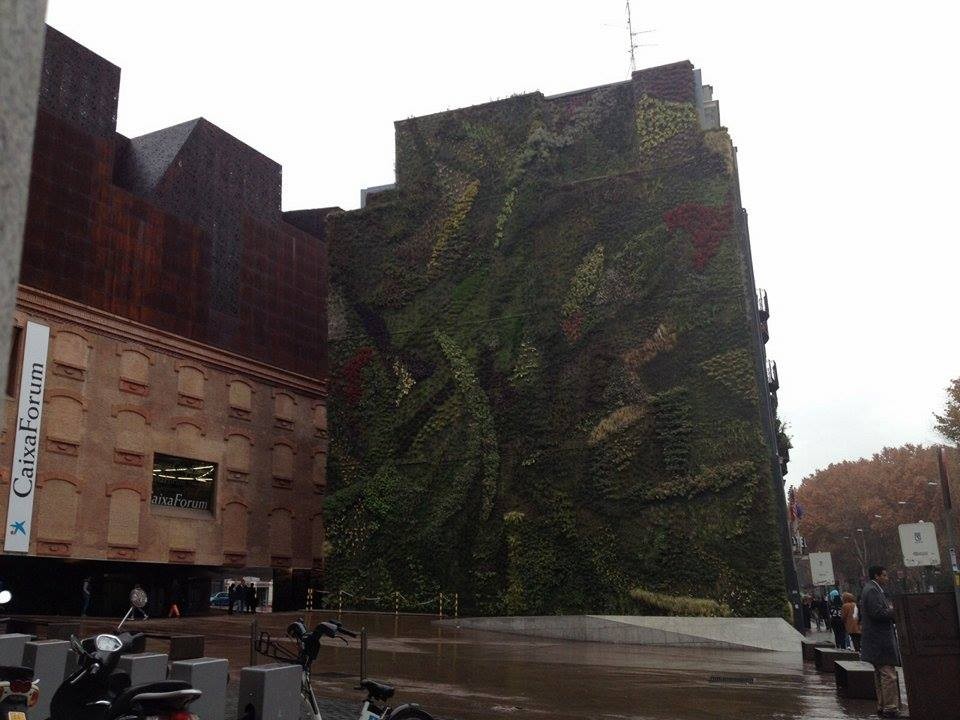
(The building together with the vertical garden to the left. )

(The design of the stairs is incredible, and to such an extent that you won't want to use the lift to get upstairs. )
High-quality temporary exhibitions
The coolest thing about this museum is that you can go there today and then return in a year's time to see something completely different - it's very dynamic and constantly changes its art exhibitions. It's important to emphasise that the museum is not only home to art exhibitions, however, as there are also photography, sculpture and architecture exhibitions, as I imagine that a large number of people think that the only thing they will find are painted canvas that they won't understand. Once you enter each exhibition, which usually have an entire floor of the museum dedicated to them...
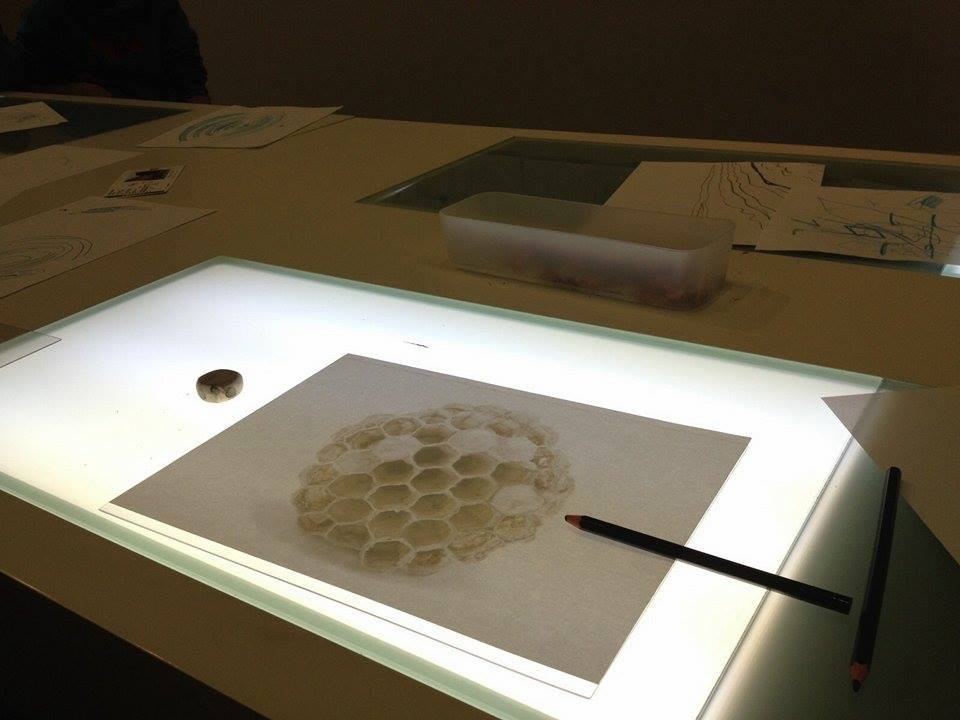
(This is an example of the dynamic of the museum: tracing the form of a nature-based image and making your own version in the same way that you would use it to make a piece of furniture. My idea was to make a lamp with this, although I still hadn't started to trace it when I took this photo. )
If you want a more comprehensive tour of the museum, you can request an audio guide or commentary, which have an additional cost, but, in this way, you will be able to delve much deeper into the history behind each exhibition.
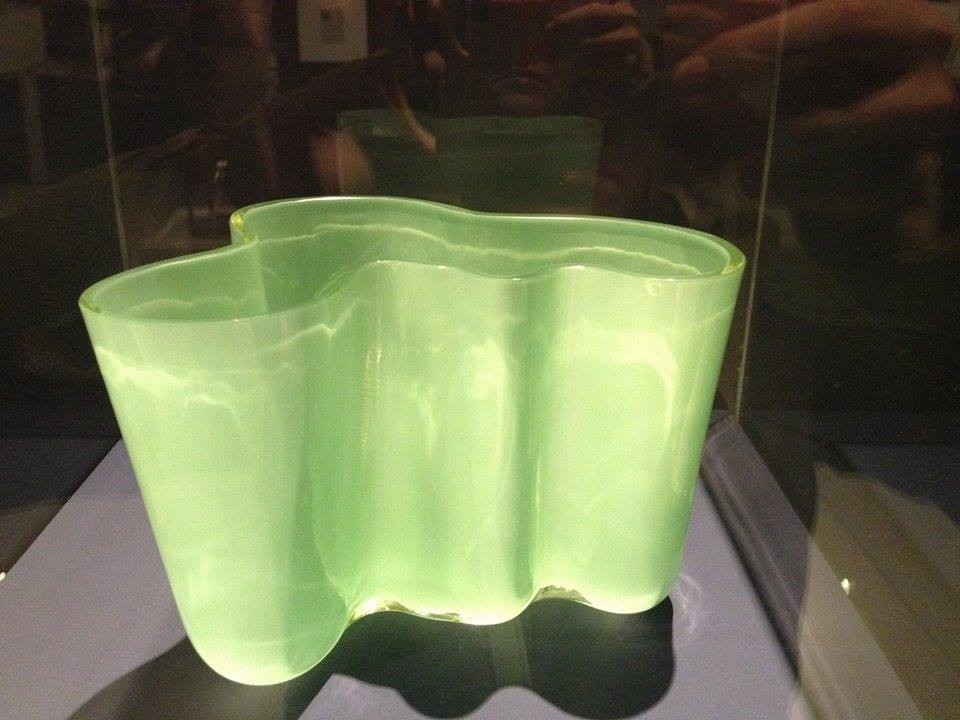
(Design exhibition. A replica of this can be found in the gift shop, if it interests you. )
Concerts
In CaixaForum Madrid, you will also be able to find several concerts with artists from all over the world, so it's likely that you will find similarities with your own cultural heritage, no? I can only imagine that you'll think that you will only end up listening to classical music, but let me tell you that if you are a fan of electronic music, you will also find your place here.
Would you like to rent space or a room? You can also do that here!
If you are an artist and you were inspired or daydreamed of putting on your own exhibitions, works, etc., you will also be able to do this problem-free by renting the auditorium, the exhibition spaces and even the cafeteria. You don't need to tell them the reason for which you want to rent the space - they will just rent it to you and that's that. You can give classes, conferences, presentations, and meet-ups related to the arts, humanities, sciences, or whatever else tickles your fancy.
Take a nice souvenir home with you from the Laie shop
If you were left wanting to know more about the exhibitions, or the exhibitors themselves, you can buy information books in the gift shop. The shop has many books and original pieces by the designers, but more or less half of what is sold depends on the exhibitions. If there were urns, for example, you would find urns designed with different materials, as well as urns of different sizes and prices, that you can take home with you. In all honesty, although their items are original and cool, you can also find them in other shops, as they sell things like magnetic pens, musical boxes and children's books that you could get for a lower price elsewhere. I only recommend buying something that you have seen in the exhibition that you wouldn't find outside of the four walls of this museum.
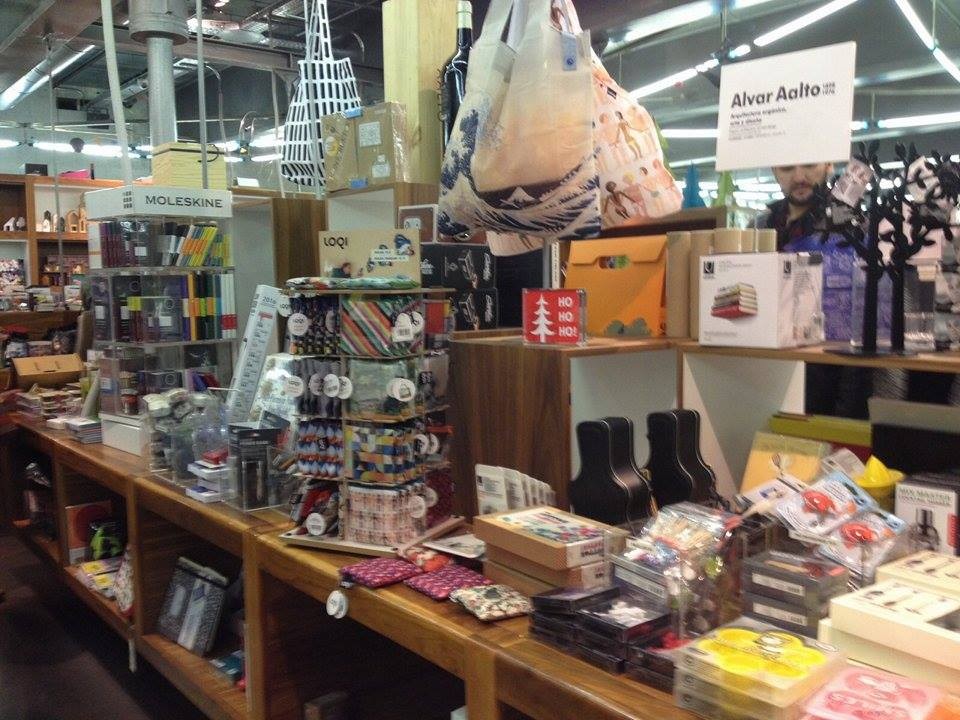
(Here you see a little bit of what's on offer at the gift shop. )
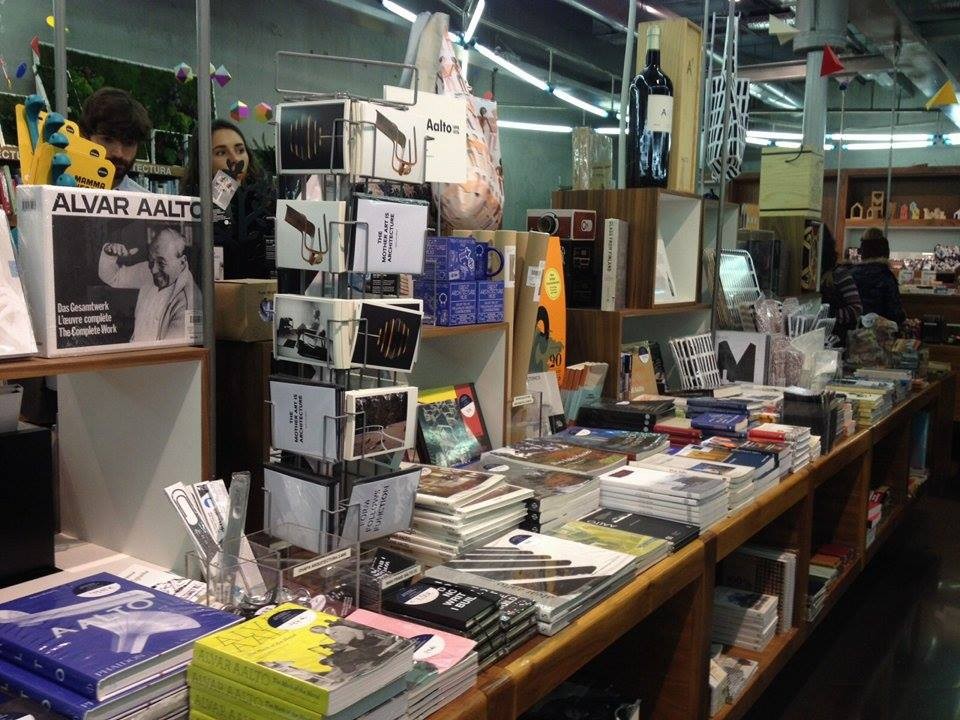
(A selection of the vast collection of books and a couple of postcards can be seen on the left. )
Enjoy a unique view of Madrid at the Vilaplana Café
This place is not only for art exhibitions, they also hold family-friendly activities and exhibitions, so it's for this reason that I say CaixaForum is suitable for any type of visitor. If you want to have a fantastic view of, arguably, the beating heart of Madrid (Buen Retiro Park), I recommend going to the lovely cafeteria located on the fourth floor of the museum (where the toilets are) and admiring the park, Atocha station, as well as the Prado and Reina Sofía museums. There is nothing cooler than having a coffee whilst enjoying a view like that in a café with incredible decor.
Final recommendations
- Taking photos is permitted, but only in some of the exhibitions.
- There are occasions when, upon entering the exhibitions, it states whether you can or not, or there are security guards there to tell you. But, sometimes they don't say anything, then pass by and walk away scolding you. In any case, I recommend that you ask before taking a photo.
